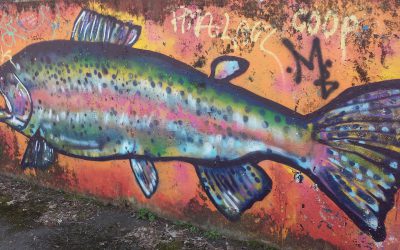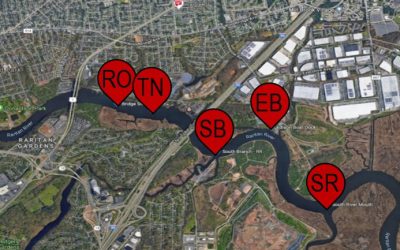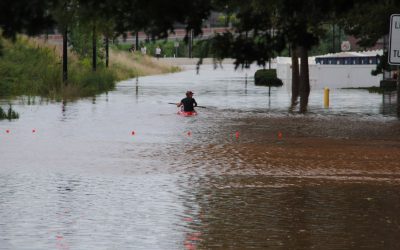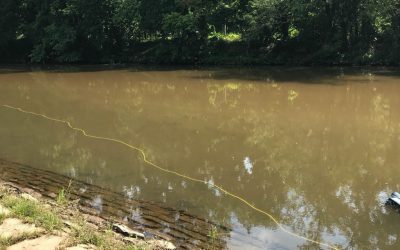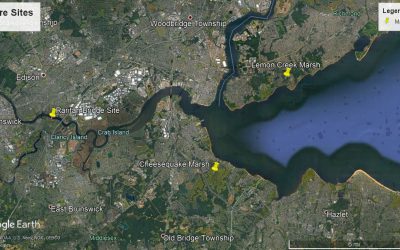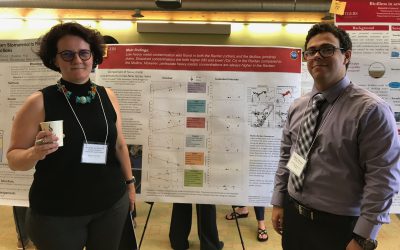
Raritan River Initiatives
The Raritan River has a rich history, which includes strong ties to Rutgers University. A number of entities from across the university are collaborating to transform the Raritan Basin into an interactive field laboratory that enhances the student experience, encourages and supports transdisciplinary research, and addresses real-world concerns of regional stakeholders.
Sustainable Raritan River Initiative (SRRI)
Rutgers University launched the Sustainable Raritan River Initiative (“SRRI”) in 2009 to bring together concerned scientists, environmentalists, engineers, businesses, community leaders and governmental entities to craft an agenda that meets the goals of the U.S. Clean Water Act to restore and preserve New Jersey’s Raritan River, its tributaries and its bay.
The Initiative, a joint program of the Edward J. Bloustein School of Planning and Public Policy (EJB) and the School of Environmental and Biological Sciences (SEBS), partners with other Rutgers schools, centers and programs to ensure the best contributions from the sciences, planning and policy. The Initiative conducts conferences and topical workshops, provides technical assistance, and develops anchor projects that raise the profile of the Raritan River. Jeanne Herb and Richard G. Lathrop, Jr., serve as co-leaders of the Sustainable Raritan River Initiative.
Rutgers Raritan River Consortium (R3C)
R3C is a collaborative effort at Rutgers University’s New Brunswick-Piscataway campus that recognizes the critical value of the Raritan and its environs to the social, economic and ecological integrity of the region that Rutgers calls home. Our mission is to utilize Rutgers’ proximity to the Raritan to inform university-based education, research and scholarship and to apply our efforts, in collaboration with Raritan partners, to advance improvements in regional planning, policy and decision-making that positively affect the ecology and economy of the Raritan region. Read more in the 2016 Public Announcement.
Johnson Family Chair in Water Resources and Watershed Ecology (JFC)
On December 15, 2015, the Rutgers Board of Governors appointed Richard G. Lathrop Jr., professor of environmental monitoring at the School of Environmental and Biological Sciences, as the inaugural holder of the Johnson Family Chair in Water Resources and Watershed Ecology.
Besides his teaching responsibilities, Lathrop, a professor in the Department of Ecology, Evolution and Natural Resources, is the faculty director of the Rutgers Ecological Preserve. over 350 acres, the preserve features several streams that feed into the Raritan River and numerous public hiking and biking trails. He also directs the Grant F. Walton Center for Remote Sensing and Spatial Analysis, whose mission is to promote the development and application of geospatial information science and technology to address issues in the environment, natural resources and agriculture.
For more information, contact Rick Lathrop at lathrop@crssa.rutgers.edu or (848) 932-1580.
Resources & Updates
R3C Webinars on Recent Raritan Research
Two free webinars to showcase recent research on the Raritan. Tuesday, November 30, 2021 from 9:00 am to 10:15 am (link to view Zoom Recording) Julie Lockwood Thomas Grothues - Fish Assemblage of the Raritan River Thalweg (link to PowerPoint) Isabelle Stinnette -...
2020 and 2021 Raritan River Conferences Canceled
Given the COVID-19 emergency and its disruption to the lives of so many members of Raritan River Basin communities, and out of an abundance of caution and in keeping with Rutgers University actions, we have canceled the 2020 and 2021 Sustainable Raritan River...
Influence of biogeochemistry on the availability of toxic metals in iron-replete New Jersey sediment
Dr. Philip Sontag and Professor Katherine Dawson collaborated on a mini-grant project to understand the biogeochemical cycles of trace metal availability in the Fe rich sediment of the Raritan River. The purpose and focus of the project was to outline sediment...
A Watershed-Based Approach to Flood Hazard Mitigation in the Raritan Region
This project examined the flood mitigation plans of the seven counties in the Raritan River watershed to better understand local government flood mitigation planning in the region. The study examines how county agencies analyze flood risks and mitigation strategies at...
Aquatic Connectivity Through Climate-Ready Culverts
Aquatic connectivity is a key restoration goal for the New York – New Jersey Harbor & Estuary Program (HEP) and its partners. The creation of connectivity assessment protocols, training methods and data sharing developed by the North Atlantic Aquatic Connectivity...
Near-real-time Water Quality Monitoring in the Raritan River Using Hybrid Vehicular-static Stations
Near-real-time water-quality monitoring of different variables in the Raritan River is critical to protect the aquatic life and to prevent propagation of the potential pollution in the water. Using only static sensors attached to fixed monitoring stations with...
Blue Carbon in the Tidal Marshes of the Raritan
Tidal marshes provide a range of ecosystem services, including carbon sequestration. Although New Jersey’s tidal marshes appear to have kept pace with historical sea level rise in the pre-industrial period (Kemp et al., 2013), accelerating rates of sea level rise...
#lookfortheriver: finding historic streams of the Lower Raritan Watershed
The changing climate and development patterns of the Lower Raritan Watershed occur against a backdrop of substantial impervious surface coverage (approximately 34%), high population density, and significantly modified stream networks (e.g., stream straightening and...
RISE on the Raritan
The Rutgers Raritan River Consortium (R3C) is dedicated to providing students, especially those from diverse backgrounds, with opportunities to access and study the Raritan alongside professionals, stakeholders and decision-makers. Similarly, the RISE at Rutgers...
